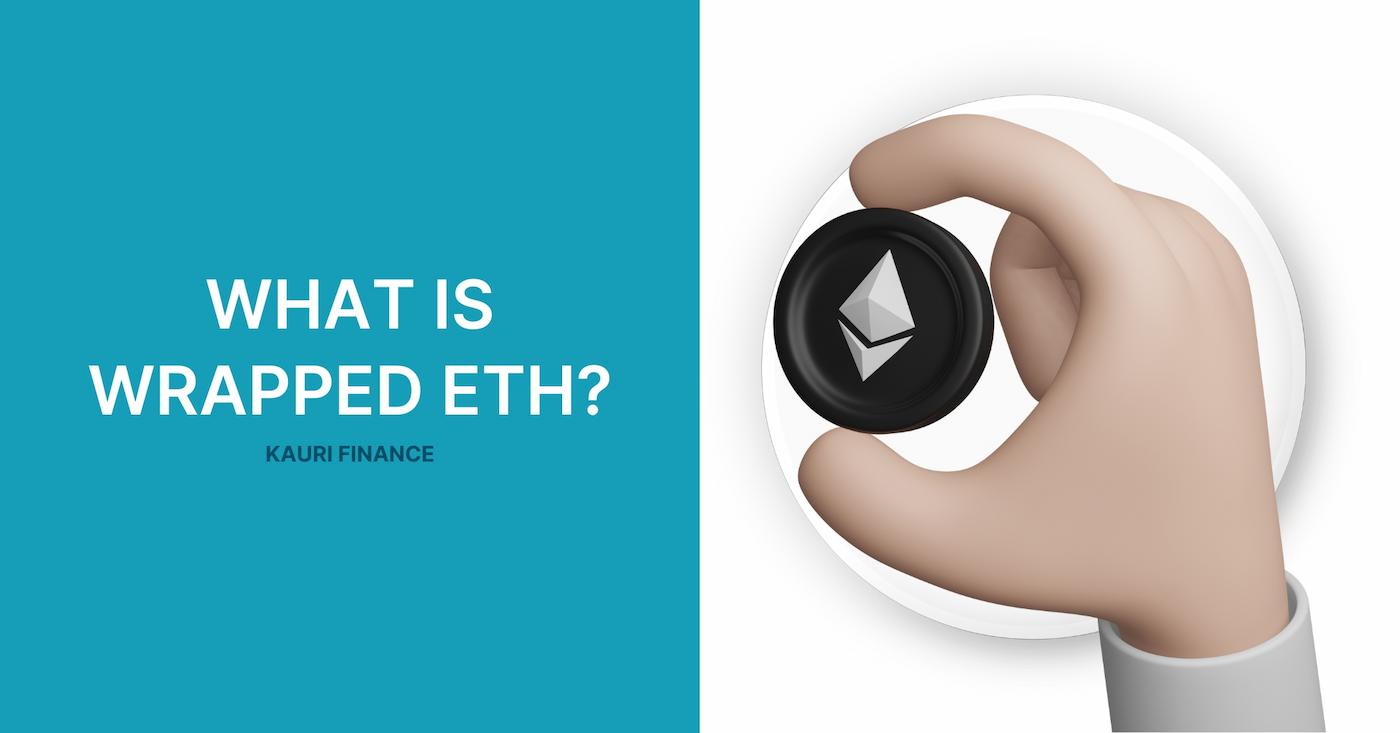
What is Wrapped ETH?

In recent years, as blockchain technology has grown in popularity and the field of decentralized finance (DeFi) has evolved, many innovative solutions have emerged to address the limitations of existing digital currencies.
Wrapped Ethereum (WETH) is a prime example of such a solution, offering a way to improve interoperability between different blockchains. WETH allows ether, the core asset of the Ethereum network, to be used in ecosystems of other blockchains, thereby expanding its applications beyond the original network.
What is Wrapped Ethereum (WETH)?
Wrapped Ethereum (WETH) is a tokenized version of Ethereum that was created to solve the problem of interoperability between different blockchain platforms. WETH has all the characteristics of the original Ethereum cryptocurrency, but at the same time can be used in other blockchain systems, facilitating cross-border and cross-blockchain transactions.
In many ways, wrapped tokens such as WETH are similar to the concept of stablecoins. Their main function is to provide a stable value and the ability to exchange for the original asset at any time. However, unlike stablecoins, which are tied to the value of fiat currencies, wrapped tokens retain the value of the associated cryptocurrency.
Examples of other wrapped tokens include wrapped Bitcoin (WBTC), wrapped BNB (Wrapped BNB), wrapped AVAX (Wrapped AVAX), and many others, each serving a key role in enabling compatibility and interoperability between different blockchains. This expands the application boundaries of underlying assets and facilitates more efficient capital allocation across the DeFi ecosystem.
The importance of WETH
One of the key challenges in the blockchain space is the low interoperability between different blockchains. Native coins from one chain typically cannot be used on other networks, limiting their functionality and applicability.
Solution with WETH:
- Increasing Interoperability: WETH solves this problem by allowing Ethereum to be used on other blockchain platforms. This creates bridges between different ecosystems, expanding the use of ether across the entire crypto space.
- Tokenization of Native Coins: Wrapping is done by tokenizing native coins, making them compatible with the blockchain on which they are used. This transformation allows native coins to act in accordance with blockchain tokenization standards, such as ERC-20 on Ethereum.
- Cross-chain applications: By tokenizing ETH as WETH, users can easily move their assets between different blockchains, participating in DeFi projects, blockchain games, and other applications outside of the original Ethereum network.
How does Wrapped Ethereum (WETH) work?
Wrapping process involving custodians:
- Custodians: To wrap Ethereum, you need a custodian to hold your ethers and give you WETH in exchange. Custodians can be merchants, multi-signature wallets, or even smart contracts.
- Minting WETH: After you send your ethers to a custodian, a wrapped version of your coin will be created. For example, on a DEX such as Uniswap, you can exchange your ether for WETH directly.
Application of WETH:
Wrapped Ethereum is required for exchange between tokens on decentralized exchanges and in decentralized applications. Some dApps can only work with WETH as collateral, not ether. Although ether is required to pay for gas, WETH as an ERC-20 token can be exchanged for other ERC-20 tokens in dFi applications.
Having versions of WETH on other blockchains allows for the mirroring of ether on those blockchains, increasing liquidity and capital efficiency across the blockchain space.
ERC-20 standard and WETH
The ERC-20 token standard plays a key role in the Ethereum ecosystem by defining a common set of rules for all tokens issued on its blockchain. This simplifies the creation of new tokens, as developers do not need to redesign the fundamentals of a token from scratch. The basic requirements of the standard include functions such as total number of tokens, token transfers, and methods for balance data and transaction resolution.
However, despite the universality and importance of ERC-20 to the development of the Ethereum ecosystem, ether (ETH) itself is not compliant with the standard. This creates interoperability problems, as ether cannot be directly used in many decentralized applications (dApps) and decentralized financial platforms (DeFi) that are designed to work with ERC-20 tokens.
Wrapped Ethereum (WETH) was created as a solution to this problem. By converting ether into WETH, which is ERC-20 compliant, users are able to participate in the DeFi ecosystem by using their ether without restrictions. In this way, WETH serves as a bridge, allowing ether to be fully integrated into a wide range of applications on Ethereum, opening up new opportunities for users to interact and invest in blockchain projects.
Unique Features of Wrapped Ether (WETH)
Wrapped Ether (WETH) provides unique opportunities in the blockchain ecosystem, standing out from other cryptocurrencies with the following features:
- Inter-blockchain compatibility: WETH solves the problem of low interoperability between different blockchains by allowing ether to be used on other platforms. This expands the possibilities of ether beyond its native Ethereum blockchain.
- Increased liquidity and capital efficiency: The use of WETH increases liquidity and capital efficiency in the DeFi market by allowing users to move their assets between different blockchains and participate in different DeFi projects.
- Transaction Simplification and Fee Reduction: WETH can be used to transact on other blockchains, potentially reducing transaction time and cost compared to using ether on the Ethereum blockchain, especially during periods of high network congestion.
- Access to DeFi and dApps: WETH provides users with access to a wide range of decentralized applications and financial services that require compliance with the ERC-20 standard for interoperability, extending the functionality of ether.
- Additional risks and considerations: WETH users should consider additional risks associated with storing and managing wrapped tokens, such as security risks of custodial solutions and potential changes in the value of the wrapped token compared to the original asset.
Risks and challenges
Wrapped ether (WETH), like any innovative solution in blockchain and DeFi, comes with certain risks and challenges:
- Risks associated with custodial solutions: Keeping the original assets with a custodian (custodian) while wrapping entails trusting a third party, which contradicts the ideology of full decentralization and can lead to risks of asset loss due to hacking or custodian dishonesty.
- Smart Contract Risks: Any transaction with WETH depends on the reliability and security of the smart contracts used to create and manage it. Errors in code or vulnerabilities can lead to loss of funds or abuse.
- Limitations of wrapping solutions on different blockchains: Not all blockchains can support wrapped tokens equally efficiently, which can create difficulties for users when trying to use WETH in different ecosystems and applications.
The role of Kauri Finance
Kauri Finance provides non-custodial users with the tools and resources to safely participate in the DeFi ecosystem, including working with WETH and other wrapped tokens. The Kauri platform aims to facilitate access to innovative financial products by offering educational materials, convenient wallets, and support for wrapped token transactions.
Integrating and leveraging Kauri Finance's services can help users maximize their DeFi opportunities while minimizing risk and simplifying the process of managing wrapped assets. At the same time, Kauri emphasizes the need for education and an informed approach to investing, emphasizing the importance of analyzing and understanding the wrapped token market and its characteristics.
WETH plays an important role in the decentralized finance (DeFi) ecosystem by eliminating interoperability issues and enhancing the liquidity and functionality of ether on various blockchain platforms. However, the use of WETH comes with risks that require careful consideration and understanding on the part of users.
